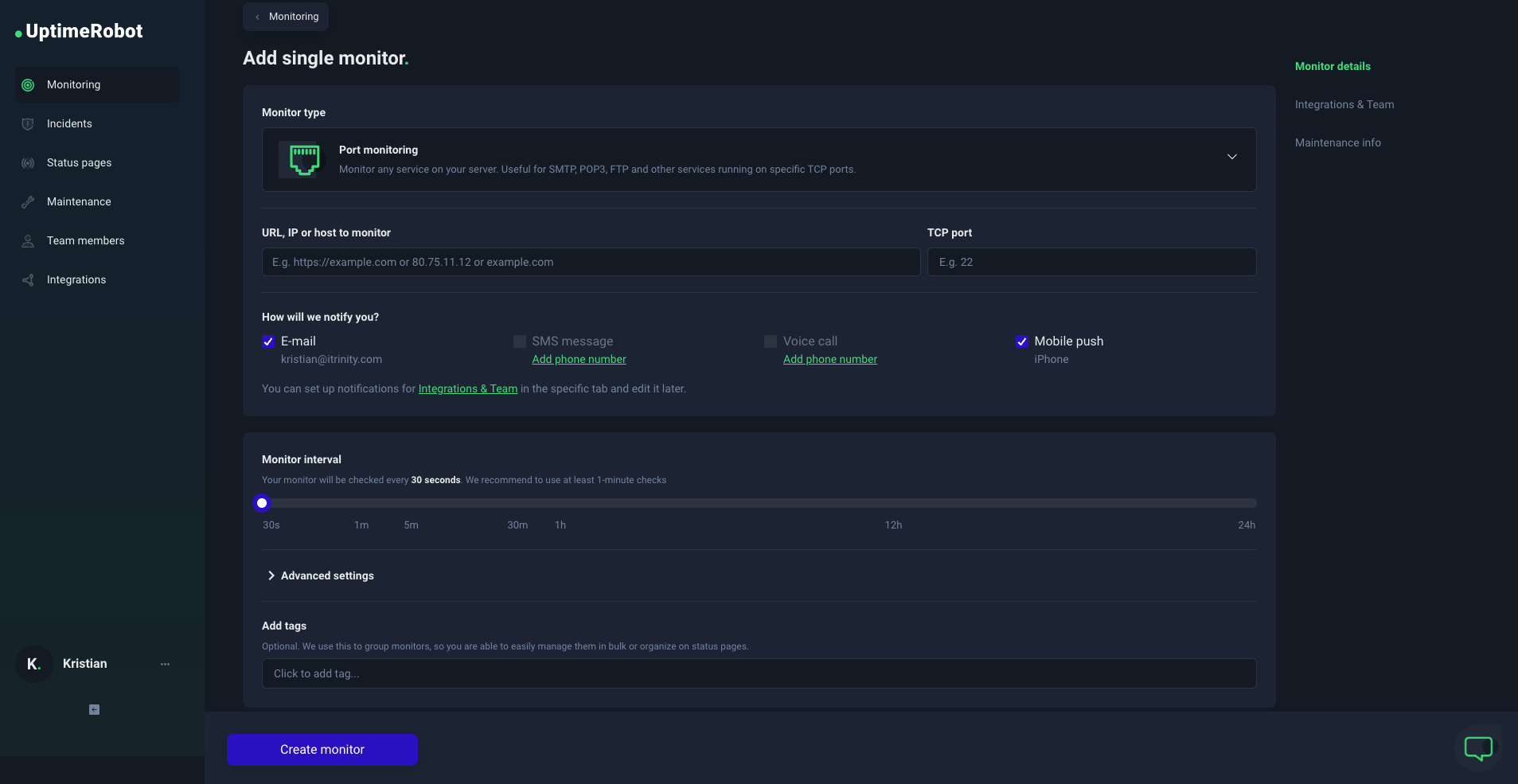Quick links
Over 347 billion emails were sent and received every day in 2023, a number that is expected to increase to over 361 billion daily emails in 2024. With so much information always flowing, the reliability and efficiency of email servers have never been more important.
So what happens when servers fail and emails don’t go through? Consider the financial repercussions — downtime can cost businesses as much as $5,600 per minute (a whopping $300,000 per hour).
If you’re not receiving customers’ emails or your campaigns aren’t fully going out because of server errors, the cost could reach tens of thousands of dollars.
And that’s before you even consider the erosion of customer trust, which can have long-lasting repercussions on a company’s brand image. For individuals, the stakes are equally high.
According to a survey conducted by Consumer Email Survey, people spend an average of 5.6 hours each day checking email — 3.1 hours per weekday on average on work emails and 2.5 hours on personal emails.
Any disruption in email services can result in significant delays, affecting personal and professional communications alike.
To ensure that communication lines remain open, secure, and efficient, you need a proper POP3 and IMAP monitoring system. Join us as we take a closer look into the critical elements of monitoring email servers, including the role of protocols like POP3, IMAP, and SMTP.
POP3 & IMAP Server Monitoring
Every time you send or receive a message, POP3 (Post Office Protocol version 3) and IMAP (Internet Message Access Protocol) work in the background in the management and retrieval of your messages from mail servers.
What is POP3 (Post Office Protocol 3)?
POP3 stands for Post Office Protocol 3, which is the most widely adopted method for receiving emails over the Internet. This protocol is designed to download emails from a remote server to a local email client, making it possible for users to access their messages offline.
Essentially, POP3 works by connecting to the email server, retrieving all messages, storing them on the user’s device, and finally deleting them from the server—commonly referred to as a “store-and-forward” service.
POP3 ports:
- Port 110: The default, non-encrypted port for POP3.
- Port 995: Used for secure connections when encrypting POP3 email retrievals.
How POP3 works
When using POP3, the process begins with the email client establishing a connection to the email server on TCP port 110. Once connected, the server greets the client, prompting the user for authorization using their credentials.
After successful authentication, the client can execute commands to retrieve and delete emails, ultimately ending the session with a ‘quit’ command which prompts the server to delete the messages and end the connection.
What is the relationship between POP3, IMAP, and SMTP?
While POP3 and IMAP handle email retrieval, SMTP (Simple Mail Transfer Protocol) is the backbone for sending emails. It acts as the mediator that relays messages from the sender’s email client to the recipient’s email server.
SMTP servers (such as Gmail: smtp.gmail.com or Outlook: smtp-mail.outlook.com) connect through specific ports (commonly 25 or 587) and authenticate messages to prevent spam, ensuring that your email reaches its destination securely.
In contrast to POP3, IMAP (Internet Message Access Protocol) offers a more flexible solution by allowing emails to remain on the server, enabling users to organize, sync, and access their messages across multiple devices. This makes IMAP preferable for users who access their email from various locations or devices. IMAP typically uses ports 143 (non-encrypted) and 993 (encrypted).
Together, POP3, IMAP, and SMTP provide a comprehensive suite of protocols that support the diverse needs of email users, from server communication and message retrieval to secure message transfer across the internet.
Whether it’s maintaining offline access with POP3 or syncing across multiple devices with IMAP, understanding these protocols is crucial for effective email management.
Why you should be monitoring POP3 & IMAP
Because these protocols are so important to email communications, monitoring POP3 and IMAP is essential for businesses.
Suppose your company depends on email for marketing, communication with customers, or interaction with colleagues in different locations. In that case, the stability and efficiency of POP3 and IMAP is the only way to ensure a continuous flow of vital information.
Service disruptions, which might seem minor, can escalate quickly, potentially causing significant delays in project timelines, client communications, and even financial transactions.
For example, if your POP3 server is not working, it could be due to something as simple as bad firewall settings or missing or incorrect POP3 configuration on the server.
Knowing when these issues pop up so you can fix them quickly can make a world of difference.
You can easily avoid the risks by using a reliable uptime monitoring that will alert you once your attention is needed. UptimeRobot allows you to create 50 free monitors for life.
Businesses that don’t keep an eye on these issues could end up with a hurt reputation and a hurt bank account. In sectors like healthcare, it’s even worse — a failed server could delay the transmission of critical data and impact patient care.
Without a proper monitoring system, data breaches can go unnoticed and data integrity could be corrupted or compromised. Here are some stats that show how big of a problem this is:
- 45% of the data breaches are cloud-based
- Yahoo! once experienced a data breach affecting nearly 1,000,000,000 individuals
- The average cost of a data breach is $ 4.24 million
In the end, an optimized email server ensures that even the largest volume of emails processed daily is handled efficiently, avoiding bottlenecks that can affect an entire organization.
When to consider advanced monitoring solutions
Whether you’re using POP3 or IMAP, considering advanced monitoring solutions is a good idea as your business grows.
These solutions can provide real-time alerts when incidents happen in your infrastructure, aiding in proactive issue identification and resolution. Monitoring solutions are particularly important if:
- you’re an organization where data sensitivity is essential, such as finance or healthcare,
- you need to follow compliance parameters to avert potential legal repercussions.
SMTP server monitoring
SMTP, or Simple Mail Transfer Protocol, operates as the powerhouse facilitating email transmissions across servers.
Serving as the backbone of sending emails, SMTP ensures that messages are properly routed from the sender to the recipient’s email server.
It acts as a postman, transferring messages between mail servers until they reach their final destination. Its functioning is fundamental to any email service, ensuring that communications are not just sent but are received accurately.
Here’s why monitoring SMTP servers is of utmost significance:
Ensuring Reliability and Timeliness
SMTP servers are responsible for the prompt delivery of emails. Monitoring these servers helps in identifying and rectifying potential delays or failures in email transmission, thus ensuring that time-sensitive communications are not hampered.
Data Security
Secure SMTP servers are pivotal in protecting sensitive data transmitted through emails. Monitoring can identify unusual activity patterns or potential security breaches, enabling prompt actions to safeguard data.
Resource Optimization
SMTP servers require optimal resource allocation to function effectively. Monitoring helps in resource management, ensuring that servers do not get overloaded, which can lead to delays or failures in email deliveries.
Compliance Adherence
Many industries are bound by strict compliance regulations concerning data transmission. Regular monitoring can help in adhering to these regulations by ensuring the encrypted and secure transmission of data.
Reputation Management
A well-functioning SMTP server is vital in maintaining a business’s reputation. Continuous server downtimes or failures can affect a company’s reliability in the eyes of clients and customers. Monitoring helps in maintaining the smooth functioning of SMTP servers, thus safeguarding a company’s reputation.
Cost-Efficiency
Downtimes can have a financial impact on businesses, with disruptions potentially leading to financial losses. Monitoring SMTP servers helps in averting these situations, thus promoting cost-efficiency.
To further enhance the SMTP port monitoring process, tools such as UptimeRobot can be of immense value. This tool not only assists in setting up SMTP server monitoring seamlessly but also offers advanced features that enable businesses to gain deeper insights into server performance, resource utilization, and security aspects, helping foster a more secure and efficient email communication infrastructure.
How to set up SMTP server monitoring with UptimeRobot
You can use UptimeRobot to set up POP3, IMAP, and SMTP port monitoring to be alerted about any issues with your essential email services. Here is a simple, step-by-step setup guide and a look into some advanced features that UptimeRobot brings to the table:
Step-by-step setup guide:
- Log into your account: (or create one if this is your first time using UR) and click on the blue “New monitor” button.
- Select monitor type: Choose the “Port monitor” as your monitor type and input the necessary details of your SMTP server, including the server address and port number. You can also specify the frequency of monitoring checks, ranging from 30 seconds to 60 minutes.
- Set up alerts: Choose how we’ll notify you, you can set up new notifications by choosing from up to 17 native integrations under the “Integrations” tab later.
- Add tags (optional) to group your monitors.
- Activate monitoring: Click on the “Create monitor” button and you’re all set now!
Advanced UptimeRobot features:
- Request timeout settings, ensuring you’ll avoid false positives if your server takes a bit longer to reply as usual. You can choose from a 1 to 60-second timeout threshold.
- Maintenance windows to prevent false alarms during planned server downtimes or maintenance activities.
- Response time reports so you can take advantage of trend analysis.
- Customizable public status pages to share server statuses with your team or clients, enhancing trust and reliability.
- API access to customize the monitoring experience further, including setting up integrations with other tools and services you may already use.
- Advanced alerting that includes integrations with popular platforms like PagerDuty, Splunk on Call, Pushbullet, MS Teams, Google Chat, Slack, Discord, Telegram, Pushover, webhooks, email, and Zapier so can act immediately when an issue is detected.
Microsoft Exchange server monitoring
Microsoft Exchange Servers are a powerful, centralized hub for email communications, calendar management, scheduling, and several other collaboration tools. Developed by Microsoft, these servers can integrate with various other Microsoft services, making them a popular option for businesses seeking a unified solution.
According to Tech Target, Microsoft Exchange Server mainly “focuses on sending, receiving and storing email messages. In addition to managing messaging traffic, Exchange Server provides several other collaboration features, like calendaring and tight integration with other Microsoft Office applications.”
Exchange Servers use both POP3 and IMAP to retrieve emails, which in turn rely on SMTP protocol to manage the sending and receiving of email messages. Even a minor downtime can lead to significant disruptions in business operations, not to mention potential data loss or security breaches.
Here are some specific considerations and tips for effectively monitoring Microsoft Exchange Servers:
- Performance monitoring: Keep an eye on server performance metrics such as CPU usage, memory usage, and disk activity to ensure optimal functionality and prevent potential downtimes.
- Mail flow monitoring: Implement mechanisms to monitor the mail flow constantly, to quickly identify and rectify any delays or failures in email delivery, ensuring seamless communication.
- Log analysis: Utilize log analysis to keep track of server activities and to identify any unusual patterns or potential security breaches, allowing for timely intervention.
- Take advantage of native tools: Tools such as the Exchange Management Console and the Exchange Admin Center offer detailed insights and management options.
- Third-party monitoring tools: Consider incorporating third-party monitoring tools such as UptimeRobot for a more comprehensive view of the server’s performance and health.
Regular monitoring of Microsoft Exchange Servers can help ensure a stable, secure, and efficient communication infrastructure.
How to know when your mail server fails
Even with robust monitoring mechanisms, server failures can occur. Recognizing the signs of mail server failures – be it delayed message delivery, server connection errors, or unscheduled downtime – can facilitate swift action.
The repercussions of server downtime are substantial, impacting business continuity and potentially incurring financial losses.
Common signs of impending server failures include:
- Delayed email deliveries
- Frequent problems with database mounting
- Sudden spikes in CPU usage (can be a tell-tale sign of server strain)
- Event log errors
- connectivity issues
What to do when your mail server fails
A well-defined response strategy is crucial when servers fail. This involves a series of steps encompassing identification of the issue, analysis of its impact, and implementation of corrective measures. In these cases, UptimeRobot’s alert and notification system can act as an important part of POP3 and IMAP monitoring, prompting immediate action and minimizing downtime.
The best way to protect your servers, however, is to be proactive.
Don’t wait until your email servers are down to do something. For example, regular server health checks can help detect anomalies early on, while capacity planning can help you manage the growth of your email infrastructure efficiently.
Setting up alert thresholds and taking advantage of monitoring tools will provide multi-protocol support so you can keep an eye on server performance and uptime.
You should also consider planned downtime so you can perform maintenance and updates to ensure the optimal functioning of servers and to safeguard against potential failures.
How can UptimeRobot help you?
From providing real-time analytics to facilitating instant notifications, UptimeRobot can help transform the way your business approaches email server monitoring.
Here’s how UptimeRobot can help:
- Real-time monitoring provides peace of mind. If your email servers are always monitored, you’ll be able to tackle issues before they can impact your business functionality.
- Comprehensive Monitoring Solutions: Manage various types of monitoring from a single platform, including essential port monitoring, which is vital for maintaining server health.
- Instant notifications let you know about any downtime or disruptions via channels such as email, SMS, Zapier, webhooks, Slack, and more. UptimeRobot supports up to 17 integrations, enhancing the functionality and reach of your monitoring setup.
- Multi-protocol support: UptimeRobot supports a wide array of protocols including HTTP, HTTPS, POP3, and IMAP. The inclusion of POP3 and IMAP protocols means that it can monitor your email servers even more comprehensively, ensuring seamless retrieval and communication of emails.
- Lifetime Free Plan: Offers a lifetime free plan that includes 50 monitors and free ping monitoring, particularly beneficial for those focused on server maintenance.
- Frequent Monitoring Intervals: Offers flexible monitoring intervals, allowing checks as often as every 30 seconds, 1 minute, or 5 minutes to ensure timely detection of issues.
Start monitoring your email servers with UptimeRobot, and witness a transformation in your communication infrastructure today!


